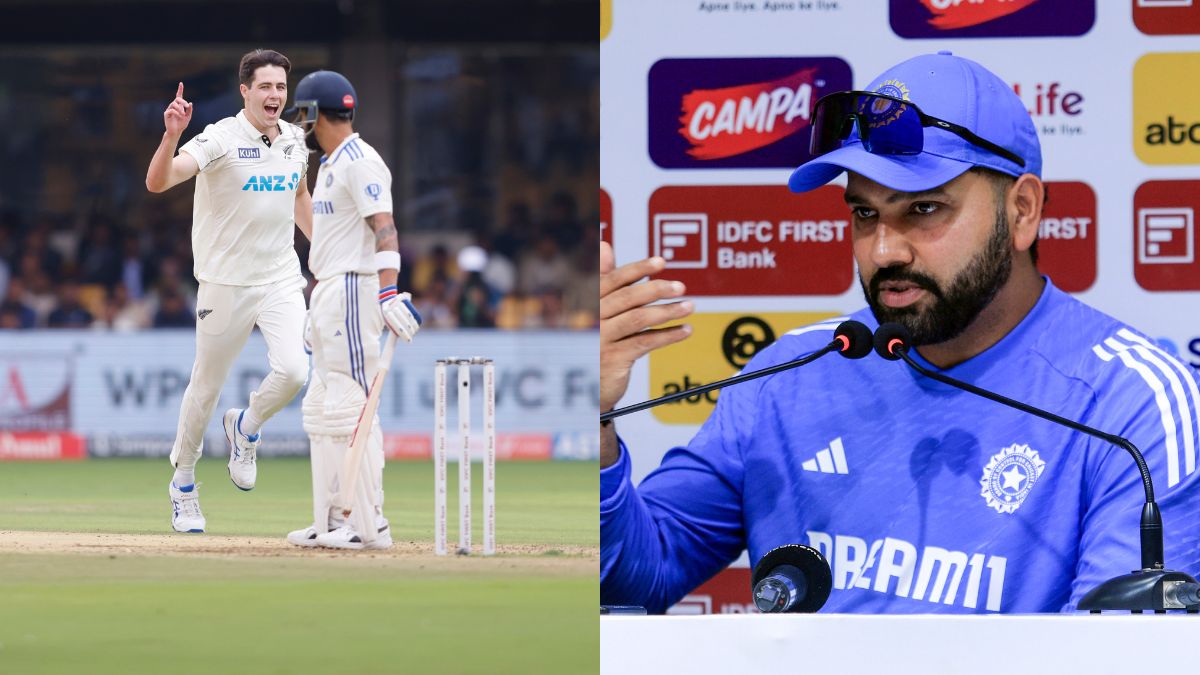India’s humiliating collapse to 46 runs in the first Test against New Zealand in Bengaluru left captain Rohit Sharma deeply disappointed. The decision to bat first in overcast conditions backfired spectacularly, resulting in India’s lowest-ever Test innings total at home. This shocking defeat prompted introspection on the team’s strategy and performance, highlighting the challenges faced and the lessons learned from this unprecedented setback. The unexpected loss underscores the unpredictable nature of cricket and the high stakes involved in captaincy decisions, forcing a reassessment of approaches for future matches.
India’s Unprecedented Collapse: A Historical Low
The score of 46 all out in the first innings against New Zealand marked a devastating low point in Indian Test cricket history. This was not just any defeat; it shattered a 37-year-old record for the lowest home Test innings total, previously held at 51 runs against West Indies in 1987. The sheer magnitude of the collapse – bowled out in just 31.2 overs – stunned fans and experts alike. This humiliating performance underscored the vulnerability of even a highly-ranked team against determined bowling and unforeseen conditions.
Analyzing the Causes
Several factors contributed to India’s catastrophic batting display. The overcast conditions, the surprisingly sticky wicket, and potentially questionable batting decisions all played their part. The failure to adapt to the challenging playing circumstances highlights a lack of resilience and an inability to negotiate a difficult pitch. The team’s inability to build partnerships and a string of individual batting failures further exacerbated the situation, resulting in a catastrophic collapse. The collective failure across the batting line-up demonstrates a clear need for better adaptability and mental fortitude.
Rohit Sharma’s Captaincy and the Toss Decision
Indian captain Rohit Sharma acknowledged the significant impact of his decision to bat first. He admitted feeling personally responsible for the outcome, but also emphasized that even successful captains make occasional wrong calls. He highlighted the team’s proactive ambition to constantly challenge itself and push boundaries in the pursuit of excellence. This strategy, while showing commendable attacking intent, clearly backfired this time.
Learning from Setbacks
The captain’s response suggests an understanding of the need to analyze what went wrong without dwelling on the immediate negative. Sharma is highlighting that mistakes are part of cricket and that successful teams learn and adapt based on these experiences, using the failure as a platform to reassess strategies, train for adaptability to diverse pitch conditions and strengthen mental resilience within the team. Future planning should encompass various scenario training and refinement of risk assessment, given this failure.
The Need for Adaptability and Resilience
India’s abject surrender exposed significant shortcomings in adaptability and resilience within the team. While ambition to score runs early on is commendable, failing to adapt to a potentially difficult wicket indicates a lack of tactical flexibility. A key takeaway for future matches will be the team’s capacity to alter strategies in response to changing game conditions – crucial for achieving desired performance consistency. This involves improved adaptability to varied pitches and weather conditions, plus refined game management techniques to optimize strategy given dynamic changes.
Mental Fortitude: A Crucial Element
Beyond technical skills, this defeat emphasizes the critical role of mental fortitude in high-pressure situations. The swift collapse showed a lack of resilience in facing adversity, where individuals could not maintain composure and adjust their tactics based on changing circumstances. A concerted effort towards better mental preparedness could contribute to enhanced overall performance management and future triumphs.
Looking Ahead: Lessons Learned and Future Strategies
The crushing defeat should serve as a powerful learning experience for the entire team, prompting valuable revisions to training regimes, approach towards challenging conditions and game management techniques. A complete analysis is needed to understand where the team’s preparedness went wrong and how future plans can anticipate unexpected developments in games, ensuring better performance.
Strengthening Team Capabilities
Improving mental resilience is paramount for consistent performance, demanding increased investment in this area, either through individual or team sports psychology sessions. Training regimes need refinement to increase overall adaptability to challenging circumstances, allowing for improved skill development through simulation exercises to overcome potential situations. This loss served to underscore the importance of adaptability and consistency in strategies.
Takeaway Points:
- India’s 46 all-out highlights a need for improved adaptability and resilience.
- Rohit Sharma’s captaincy decision to bat first backfired spectacularly, emphasizing the high-stakes nature of leadership calls.
- Mental fortitude plays a significant role in overcoming challenges, a crucial aspect of improvement for future games.
- The team must learn from this setback and make necessary adjustments to its strategy and training methods.




